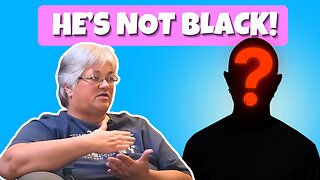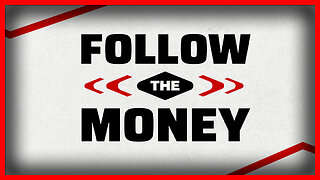Premium Only Content

Tennis Without A Racket: The Forehand
Catch The Ball
The racket is the most useful tool in tennis. The flexible string is key to producing the super-fast ball speed of advanced and professional players. Why do we want to take it away from a beginner who is just learning to hit a forehand tennis stroke? The new player adjusts immediately to the power of the racket, but at the same time has difficulty understanding how to control or direct that power. The forehand stroke utilizes the power of the arm bicep for stability and power. The stroke feels comfortable to execute mechanically. Almost immediately, there is enough raw power needed to match the shots of intermediate tennis players, yet most of a new player's forehand stroke attempts are unplayable.
The eyes are the culprits that make it difficult for new players to master the forehand stroke. The eyes of the new player send information to brain of new players that is contrary to what the instructor tells them about hitting this mechanically natural stroke. Just before that ball bounces and the new player is not sure about his instruction, he decides to hit the forehand stroke in a manner with which he is most familiar. If the new student is familiar with the baseball swing, then she decides that works better than some other way that she doesn't quite understand. To stop the eyes from playing this trick on new players over and over again and thus slowing down the process of developing an effective forehand stroke, the racket must be removed from the new player's hand. The forehand stroke like every other stroke in tennis is based on muscle memory. The new student's visual observations of an incoming ball and he panic associated with the unknown slows down the muscle memory process. In other words, for the new player, the incoming ball limits or destroys the trust of what the instructor has said is true. In the brain of the new player, there simply is not enough time to hit that annoying ball like the instructor said. Once the racket is out of the new player's hand, then she is free to concentrate on technique and honing that technique into a powerful stroke that is easy to control.
To execute a proper forehand stroke, the player must have good balance. The player's feet must be a shoulder's width apart, the player's knees must be slightly bent, and foot on the non- dominant side ( the hand that would not hold the racket) must be slightly ahead of the other foot. Once balanced is established, the player needs to practice using her hips to swing her forehand arm from behind her to the front of her. The forehand stroke generating arm is not allowed to swing itself initially, it is dependent on the hips and the legs for motion.
Once the new player's balance and swing technique (body swing) are established, the new player is given a ball to replace the missing racket. It can be a tennis ball, a paper ball, or any other ball that fits comfortably in the grip of the player's hand. Remember that the racket is only an extension of the hand, so let's start with the familiarity of the hand. From a very young age, throwing the ball is very natural and it utilizes the same bicep fueled power that the tennis forehand utilizes. The only difference is that the new player must learn to throw the ball with his body and not just his arm.
It's time to play catch. Not with another player, but the new player needs to learn how to play catch with herself.
A forehand stroke is most effectively hit when the (missing) racket hits the ball outside and to the front of the knee of the non-dominant leg of the player. This location is known as the contact point.
The new player must start in the ready position with his feet shoulder width apart , knees slightly bent, and the non-dominant player foot slightly in front of the other. The new player should a ball that fits her dominant hand and place it outside of her non-dominant leg's knee. The non-dominant hand should be positioned above the non-dominant shoulder with the elbow bent and facing forward in a manner that suggests the new players is waiting to "high five" someone in front of them. In this instance the new player can move his arm without the aid of his body, because any position beyond the contact point, the arm has control of itself. The new player still has to rotate his hips all the way through to stroke. The new player will lift her dominant hand up toward the non-dominant "high five" hand and catch the ball that continues to be held by the dominant hand as well. This part of the stroke past the contact point is called the follow through. It does two things: first, it allows the new player dominant hand to continue rising from low to high to insure the ball is lifted over the net. Second, it allows the new player's arm to decelerate so as to avoid injury.
Next, the new player, standing in the forehand ready position, grabs a ball and extends his arm and hand back and down, out from but slightly below the buttocks. The new player's dominant arm should be slightly bent and the non-dominant arm should be held away from the body to maintain balance. With the arm back, the new player should start by rotating her hips toward the front and this rotation is used to accelerate the dominant arm, hand, and ball toward the contact point. The faster the hip rotation, the faster the arm swings. However, the new player should concentrate on creating a smooth forehand stroke, because the strings supply most of the power the smooth stroke can allow the tennis ball to clear the net. Since there is no racket at this point, the new player must concentrate on accelerating the ball in his hand. During the stroke, when the ball reaches the contact point, the new player will release the ball, and it will go flying away from his hand just like a hit tennis ball. At this point, the new player continues her hip rotation, allows the arm to control itself and "high fives" the non-dominant hand.
Please check out my groundbreaking tennis self help book on Amazon
Tennis From A Nobody https://a.co/d/fWQSUMq
-
 1:00:20
1:00:20
The Tom Renz Show
1 day agoTrump Schools Zelensky, The Epstein Files FAIL, & What RFK Will Mean for Cancer
41.1K18 -
 42:47
42:47
Kimberly Guilfoyle
10 hours agoThe Trump effect: More Major Investment, Plus America First at Home & Abroad. Live w/Ned Ryun & Brett Tolman | Ep. 201
122K43 -
 1:29:23
1:29:23
Redacted News
9 hours agoWW3 ALERT! Europe pushes for war against Russia as Trump pushes peace and cutting off Zelensky
157K277 -
 57:56
57:56
Candace Show Podcast
13 hours agoHarvey Speaks: The Project Runway Production | Ep 1
151K94 -
 56:31
56:31
LFA TV
1 day agoEurope’s Relationship With America Is Over | TRUMPET DAILY 3.3.25 7PM
43.3K7 -
 2:04:45
2:04:45
Quite Frankly
11 hours ago"European Deth Pact, Blackout Data Breach, Epstein" ft. Jason Bermas 3/3/25
44K16 -
 1:32:46
1:32:46
2 MIKES LIVE
8 hours ago2 MIKES LIVE #187 Deep Dive Monday!
24.8K1 -
 44:25
44:25
CatfishedOnline
9 hours ago $1.79 earnedRacist Lady Shocked After Sending Money to a Nigeria Romance Scammer
33.6K8 -
 56:45
56:45
VSiNLive
9 hours agoFollow the Money with Mitch Moss & Pauly Howard | Hour 1
54.7K1 -
 2:28:18
2:28:18
Nerdrotic
12 hours ago $6.51 earnedOscars Aftermath | Super Chat Square Up - Nerdrotic Nooner 469
67.8K17